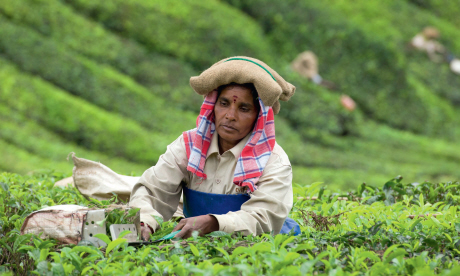
It can be fascinating watching local people going about their daily toil – but while the resulting photos can be great, you need to shoot with respect, says Steve Davey
Engagement – that’s the key to photographing people at work. You need to forge some sort of link with them. Not only is it exploitative to snap away from a distance without asking, but you will generally get disappointing pictures this way.
However, it can be hard to make a connection, especially if people are doing a menial job in a poor country. A good technique is to simply show interest in what they are doing; even ask to have a go. If you are anything like me, you will usually stuff it up, leading to great hilarity and lightening of the atmosphere.
Just because you start a conversation with someone, it doesn’t mean you have to photograph them looking at the camera. Indicate that they should carry on with their work, then spend some time there, so they forget about you: this is the way to get the most natural pictures.
Try to shoot with a more wide-angle lens than you might usually use. This will allow you to shoot from much closer, while still including some background, for context.
As well as closer shots of people at work, shoot some longer shots showing them in their environment, such as tea-pickers on a rolling hillside (above). And don’t forget close ups of gnarled hands busy working!
To find good subjects, head to working areas – for example, the tannery district in Fès medina, the truck-painting garages on the Karakoram Highway or the paddy fields of Indonesia. Be investigative – if you hear the noise of people working, go and check it out.
Remember, many people do hard jobs for very low pay. They might well appreciate a small donation from the rich foreigner shoving an expensive camera in their face. I usually don’t offer cash: some people get offended; individuals will normally indicate if they would like a little tip.
Details often say as much about a subject as the bigger picture. Get into the habit of
shooting a long shot and a close-up of every subject where possible. In low light you will need to be careful of subject blur; you might have to ask someone to freeze what they are doing so you can take the shot.
You have to interact with people to get them to react to you. Chat to people, joke with them, and encourage them.
As well as details, shoot wider shots showing workers in their environment. This emphasises the feeling of them being a small part of a workplace. Remember your composition and avoid sticking the subjects right in the centre of the frame.
Seek out working areas where you will find labourers. Keep your ears open for the sounds of people doing something. Most industry happens away from the main tourist sites so you will have to venture further afield.
Compose your picture to show your subject is actually working. A close-up headshot
might illustrate what they look like, but won’t say anything about what they actually do.
Move the focus sensor over the subject of your picture to ensure that the camera focuses on it and not the background. This is especially useful if you are composing with the subject not in the centre of the frame.
A Lastolite Reflector can lighten the shadows on someone’s face. It does a similar thing to using fill-in flash but is less intrusive and gives a more subtle effect. They are also intriguing objects, which helps break the ice!